Carolina Higuera
Sparsh: Self-supervised touch representations for vision-based tactile sensing
Oct 31, 2024Abstract:In this work, we introduce general purpose touch representations for the increasingly accessible class of vision-based tactile sensors. Such sensors have led to many recent advances in robot manipulation as they markedly complement vision, yet solutions today often rely on task and sensor specific handcrafted perception models. Collecting real data at scale with task centric ground truth labels, like contact forces and slip, is a challenge further compounded by sensors of various form factor differing in aspects like lighting and gel markings. To tackle this we turn to self-supervised learning (SSL) that has demonstrated remarkable performance in computer vision. We present Sparsh, a family of SSL models that can support various vision-based tactile sensors, alleviating the need for custom labels through pre-training on 460k+ tactile images with masking and self-distillation in pixel and latent spaces. We also build TacBench, to facilitate standardized benchmarking across sensors and models, comprising of six tasks ranging from comprehending tactile properties to enabling physical perception and manipulation planning. In evaluations, we find that SSL pre-training for touch representation outperforms task and sensor-specific end-to-end training by 95.1% on average over TacBench, and Sparsh (DINO) and Sparsh (IJEPA) are the most competitive, indicating the merits of learning in latent space for tactile images. Project page: https://sparsh-ssl.github.io/
Perceiving Extrinsic Contacts from Touch Improves Learning Insertion Policies
Sep 28, 2023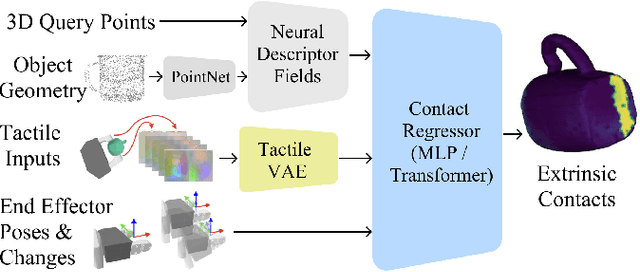
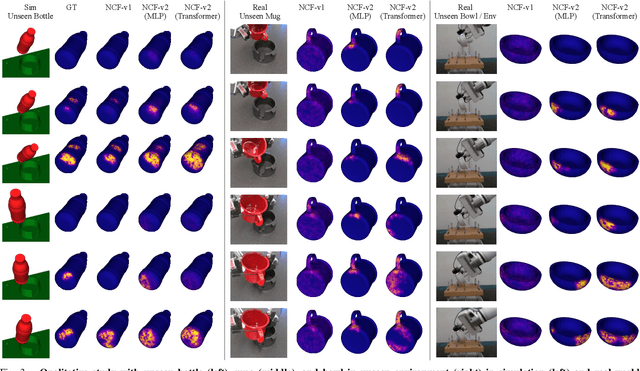
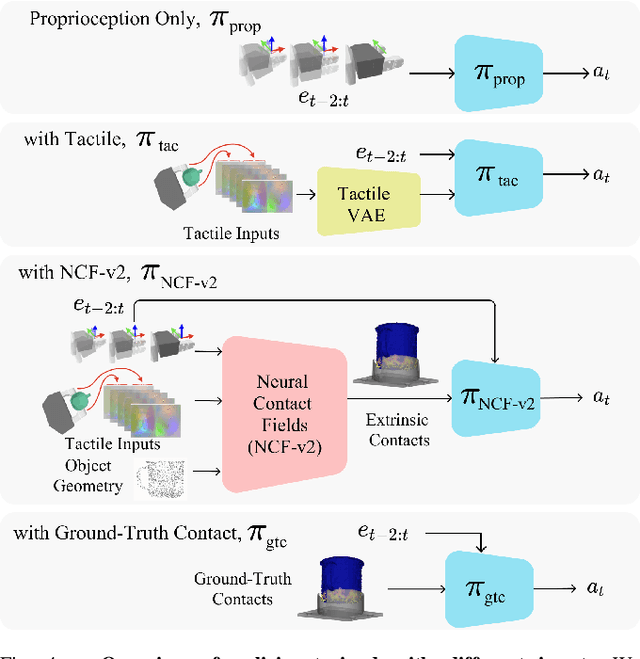
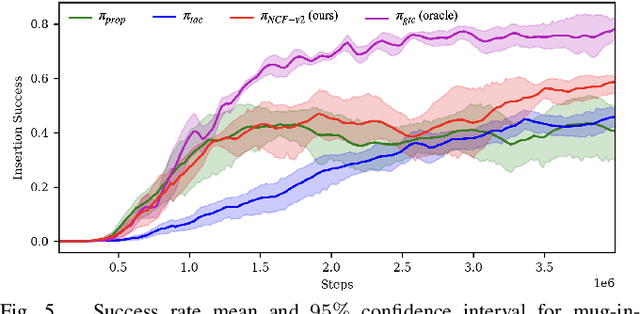
Abstract:Robotic manipulation tasks such as object insertion typically involve interactions between object and environment, namely extrinsic contacts. Prior work on Neural Contact Fields (NCF) use intrinsic tactile sensing between gripper and object to estimate extrinsic contacts in simulation. However, its effectiveness and utility in real-world tasks remains unknown. In this work, we improve NCF to enable sim-to-real transfer and use it to train policies for mug-in-cupholder and bowl-in-dishrack insertion tasks. We find our model NCF-v2, is capable of estimating extrinsic contacts in the real-world. Furthermore, our insertion policy with NCF-v2 outperforms policies without it, achieving 33% higher success and 1.36x faster execution on mug-in-cupholder, and 13% higher success and 1.27x faster execution on bowl-in-dishrack.
Learning to Read Braille: Bridging the Tactile Reality Gap with Diffusion Models
Apr 03, 2023Abstract:Simulating vision-based tactile sensors enables learning models for contact-rich tasks when collecting real world data at scale can be prohibitive. However, modeling the optical response of the gel deformation as well as incorporating the dynamics of the contact makes sim2real challenging. Prior works have explored data augmentation, fine-tuning, or learning generative models to reduce the sim2real gap. In this work, we present the first method to leverage probabilistic diffusion models for capturing complex illumination changes from gel deformations. Our tactile diffusion model is able to generate realistic tactile images from simulated contact depth bridging the reality gap for vision-based tactile sensing. On real braille reading task with a DIGIT sensor, a classifier trained with our diffusion model achieves 75.74% accuracy outperforming classifiers trained with simulation and other approaches. Project page: https://github.com/carolinahiguera/Tactile-Diffusion
Neural Contact Fields: Tracking Extrinsic Contact with Tactile Sensing
Oct 17, 2022

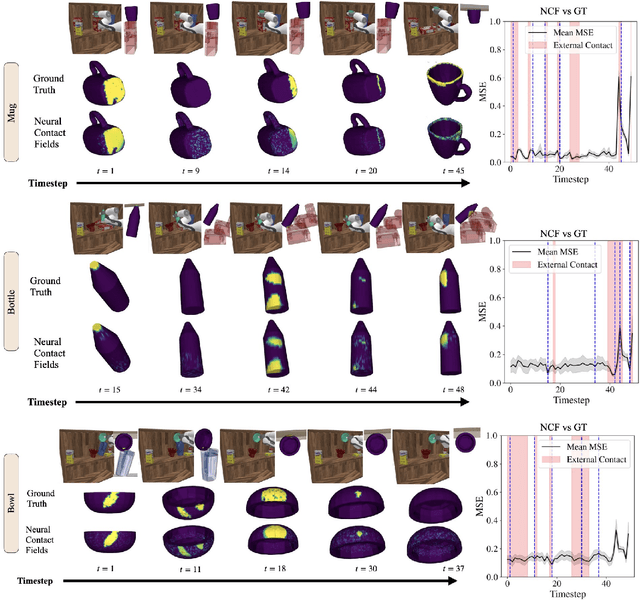

Abstract:We present Neural Contact Fields, a method that brings together neural fields and tactile sensing to address the problem of tracking extrinsic contact between object and environment. Knowing where the external contact occurs is a first step towards methods that can actively control it in facilitating downstream manipulation tasks. Prior work for localizing environmental contacts typically assume a contact type (e.g. point or line), does not capture contact/no-contact transitions, and only works with basic geometric-shaped objects. Neural Contact Fields are the first method that can track arbitrary multi-modal extrinsic contacts without making any assumptions about the contact type. Our key insight is to estimate the probability of contact for any 3D point in the latent space of object shapes, given vision-based tactile inputs that sense the local motion resulting from the external contact. In experiments, we find that Neural Contact Fields are able to localize multiple contact patches without making any assumptions about the geometry of the contact, and capture contact/no-contact transitions for known categories of objects with unseen shapes in unseen environment configurations. In addition to Neural Contact Fields, we also release our YCB-Extrinsic-Contact dataset of simulated extrinsic contact interactions to enable further research in this area. Project repository: https://github.com/carolinahiguera/NCF
 Add to Chrome
Add to Chrome Add to Firefox
Add to Firefox Add to Edge
Add to Edge